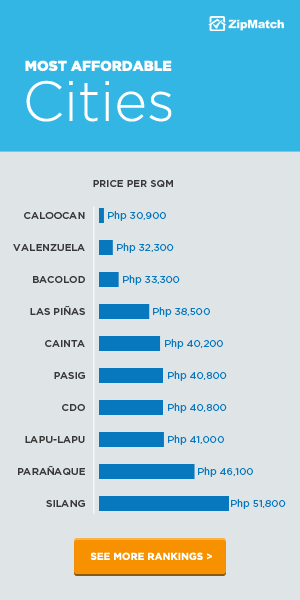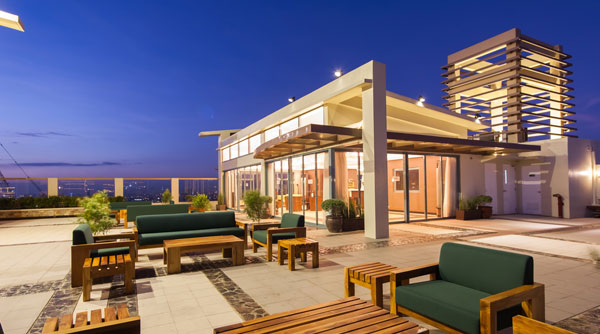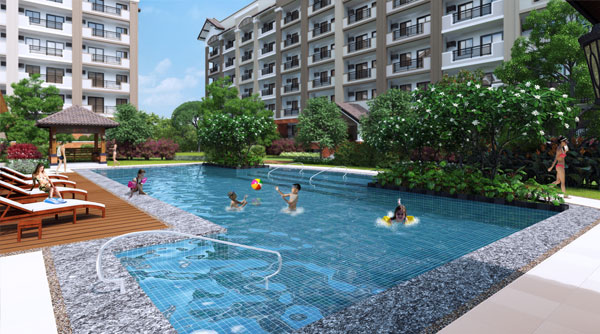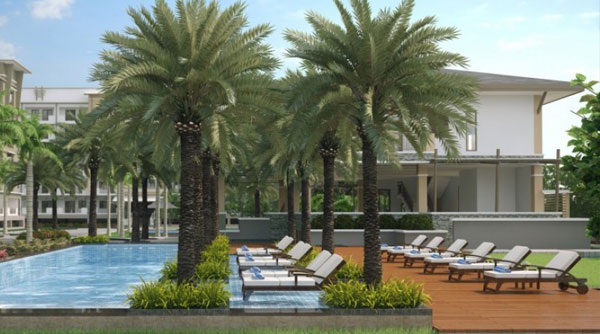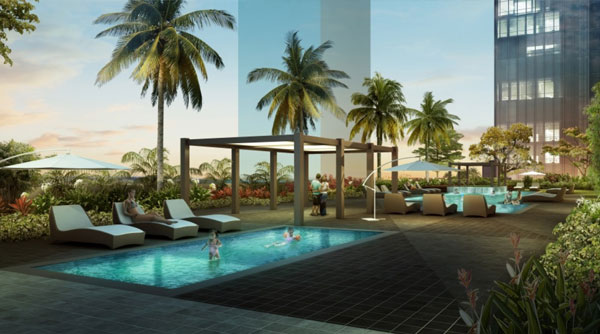
Horror vacui
Though the Bahay Kubo, which is considered the Filipinos’ national home, is described to be ‘space around space,’ most Filipinos experience fear of space or what’s more commonly called ‘horror vacui.’ This explains why we have the tendency to be hoarders. It also explains why our idea of fun and abundance relates to the word ‘siksikan.’ Parents are happy to see all of their children living in the same house even if it’s already too crowded. The jeepney should only carry a maximum of 20 passengers, but we insist on more. There’s nothing inherently wrong with these practices, but it somewhat shows that it’s hard for us to be minimalists. Unconsciously, this world view reflects the way we frame things inside our homes. We like when our living room has a large, L-shaped sofa with throw pillows on every seat. We also love it when we hang as many paintings and wall decors as we can. And we also couldn’t help but feel lacking when there’s a space on our walls. As a result, we also collect diplomas of our family members and, once again, put them all up on display. Only then can we feel that we’ve achieved our primary purpose — but only in the living room. Once we’re fill up all empty spaces in our living area, we now move to the bedrooms, kitchen, garage, and even our gardens. When you look at old homes, you’ll understand that minimalism is something we have a hard time coping with and adapting to. As we throw old furniture pieces out, it would seem like we also throw parts of ourselves out. It’s a long and painful process that demands conviction and persuasion.What is minimalism?

Why did it become so popular?
There is a variety of reasons why minimalism became so popular here and abroad. Here are some of these reasons.Pandemic economy

Environmental concerns
Aside from tightening their budgets, people have unconsciously embraced the minimalist concept because of specific lifestyle changes like going green, repurposing old fixtures, and combating waste. For example, coffee lovers tend to only care about their coffee, and they’re never worried about how much waste their coffee cups create. After being exposed to environmental campaigns launched by people who share their interests, they realize that the most viable alternative people are pushing for in place of reusable cups are cardboard cups. They also learned that cups are not only non-recyclable, but they are also not environmentally friendly. The design of these cardboard cups includes a thin cardboard edge that touches the liquid contained by the cup. This would not pass the health and safety regulations set by the government. These regulations require brand new cardboard for every cup. Upon realizing that an estimate of around 100,000 trees is needed to keep with the coffee habit of the people, they start making more innovative and greener choices. Instead of using coffee cups, they buy their own bottles and use them every time they drink coffee, even from coffee chains. Without realizing it, they became minimalists.Limitation in spaces
Another factor that strongly influenced the Filipino’s choice to adapt to a minimalist lifestyle is the continuous increase in rent and the lessening of standard living spaces. Especially within the metropolitan areas, the price of houses per square meter continues to soar. With more people flocking to the capital, the fight to get a decent share of space for a dwelling has also become fiercer. The real estate market picked on this demand and naturally caused the surge in prices of these properties. When you have less than enough space, you naturally kill the urge to add more things and elements to make it crowdier. For example, you only have a 21 square meters room, and the same room is subdivided into the comfort room, kitchen, living room, and bedroom. Will you still have the audacity to fill it with design elements that would diminish your functional living space? Will you still add furniture pieces that would only serve as decors? The answer would be no. This explains why people love design ideas for small spaces. Instead of putting their bed in one corner and setting their work table adjacent to it, they opt for a loft design with the bed on the upper floor and the cabinetries and work table immediately below it. Aside from this, it’s also common to see Pinoy homes that adapt the Scandinavian or industrial theme. The aesthetic appeal of these design concepts is to die for. But aside from that, it’s also based on the premise of functionality.Sense of satisfaction
Another reason minimalism continues to grow and affects many people is the sense of satisfaction one feels when one declutters. When you carry so much excess baggage, you’ll feel worn out. However, when you finally dump these pieces of excess baggage, you’ll realize that they weren’t essential and essential after all. When you finally take a giant leap of faith and start unburdening yourself with things you really don’t need, you start to get satisfied with the few you have. The same can be said about people who adapt to the minimalist lifestyle. When they give up things like the need to please others, the need to look good to other people, and the need to have more than what they need, they suddenly feel calm and peaceful. There’s less anxiety because your mind stops wandering, looking for things that could satisfy you. In the same vein, the feeling can be associated with throwing out non-essentials from your house. When you segregate the furniture and fixture you need from those you can throw away, you experience a more profound sense of satisfaction. It makes you feel like you’re doing something good for yourself, your family, your home.Paradigm shift
We can’t discount the fact that we, as a culture, have been heavily influenced by the minimalist homes and concepts we see on mass media. Because our horizons widened, our choices and tastes also improved. For example, when Netflix was launched in the Philippines, we came across minimalist home designs and concepts in various home makeover shows aired on the platform. Because we saw its aesthetic value and understood the ratio behind such a design concept, we were amazed by it. We thought that we could also try it out and see if it will work in our own homes. On top of that, we also see the proliferation of Facebook groups that focus solely on sharing home design ideas. We get to virtually enter the homes of our ‘kababayans’ through these pages. We saw how these minimalist concepts we only witnessed on foreign shows got adapted and contextualized to modern Filipino homes. We saw that they worked well, and so, we were finally convinced that it’s something we can also live with. Our paradigm shifted when these ideas were executed into actual home designs. You see, there’s an innate beauty in raw and simple designs; that’s why it didn’t take much effort to move us to try the same in our own homes. This architectural and lifestyle concept highlights the functionality of design elements without underplaying their aesthetic qualities.Minimalism and the future
Looking at how the minimalistic movement revolutionalized our homes and lifestyles, one can safely assume that it’s definitely here to stay. Why? For one, the pandemic is far from over, and the economy is still in a bruised-up state. Though it’s an unwelcome and morbid fact, there’s no point denying that in the next few years, we would still be suffering from the repercussions of this war with an unknown enemy. With that said, people are expected to live a life under a tight budget, buying and keeping only what’s necessary. Again, because of the circumstance, they are forced to stick to the minimalist lifestyle. Aside from that, the movement on promoting a greener and cleaner planet is also growing stronger than ever. In fact, this movement grew more diverse as you find recycling, reusing, and repurposing efforts in virtually anything that can be salvaged and reused. From containers to bags and other household items — environmental activists are fighting for sustainability and green living. Because of their persistence and tenacity in advancing their causes, more and more people have grown aware of the environmental repercussions of wastage that they found being a minimalist to be the answer to their environmental woes. There’s also no sign that living spaces will be wider and less expensive shortly. In fact, in 2050, 70% of the population is expected to settle in metropolitan areas. The number of people sharing a land area will continue to increase, but the land size remains the same. To bridge the gap, home spaces will most likely be reduced to the bare minimum. When this happens, you have no other way of coping up but to be minimalist. Also, the fear of an uncertain future continues to overwhelm people. To save ourselves from taking in more burdens than what we can manage, we might as well stick to a minimalist lifestyle. With fewer worries and things to be anxious about, we can improve our mental health.Takeaway

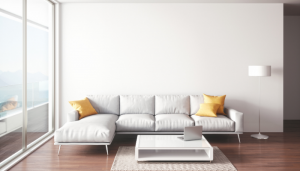 Being minimalist is not just a style choice or an aesthetic preference. Judging from our culture, background, and exposure, we can say that it’s a paradigm shift that unexpectedly saved us from more troubles. Now, with lesser things in our homes, we have more space for more valuable things. With only the functional things remaining, we start getting contented and thankful for what we can afford. And with lesser clutter, we gain pacer of mind.
Naysayers may criticize minimalists for being trend-crazy, but it shouldn’t stop them from standing up for what they feel beneficial to their lives. Those who don’t have a stake in your life should never have an opinion about your choices. After all, when all has been said and done, it’s you who will live through the wins and consequences of your choices.
Being minimalist is not just a style choice or an aesthetic preference. Judging from our culture, background, and exposure, we can say that it’s a paradigm shift that unexpectedly saved us from more troubles. Now, with lesser things in our homes, we have more space for more valuable things. With only the functional things remaining, we start getting contented and thankful for what we can afford. And with lesser clutter, we gain pacer of mind.
Naysayers may criticize minimalists for being trend-crazy, but it shouldn’t stop them from standing up for what they feel beneficial to their lives. Those who don’t have a stake in your life should never have an opinion about your choices. After all, when all has been said and done, it’s you who will live through the wins and consequences of your choices.
Like What you've read?
If so, please join our newsletter and receive exclusive weekly home buying tips, financing guides and Philippine real estate news. Enter your email and click Send Me Free Updates



